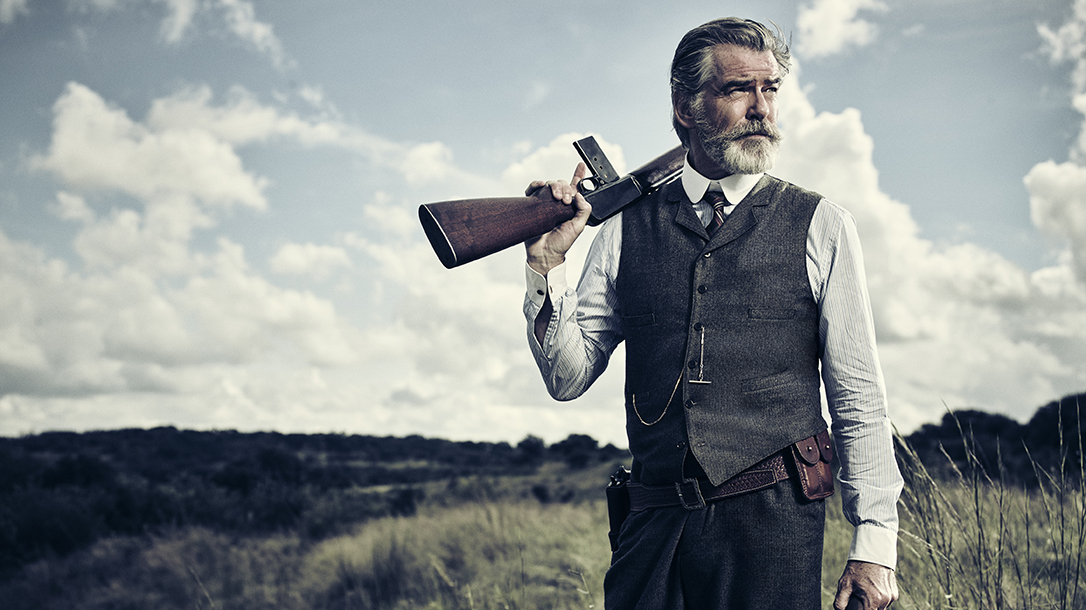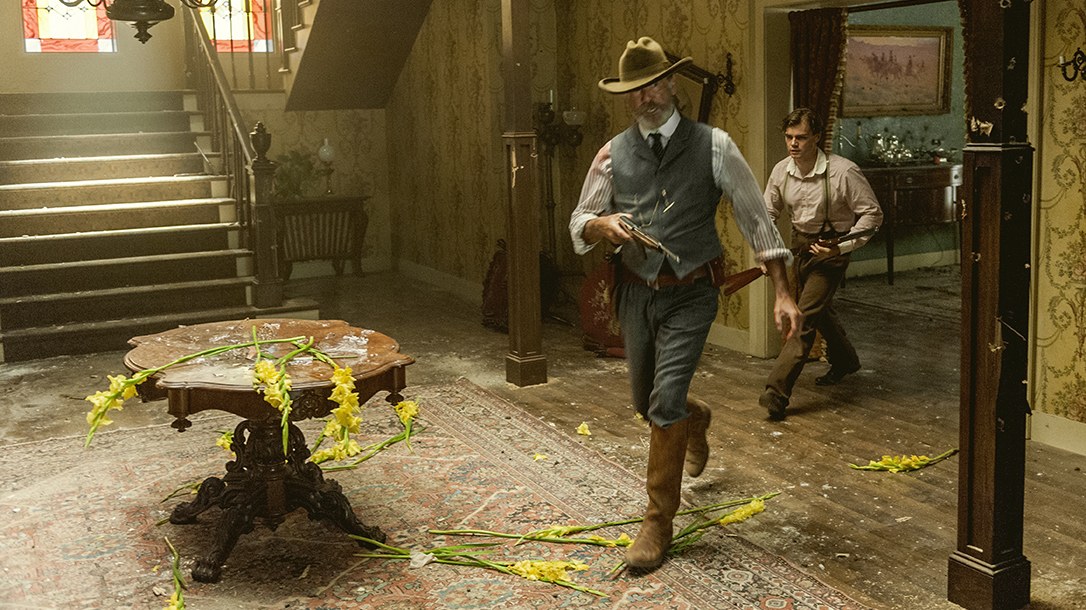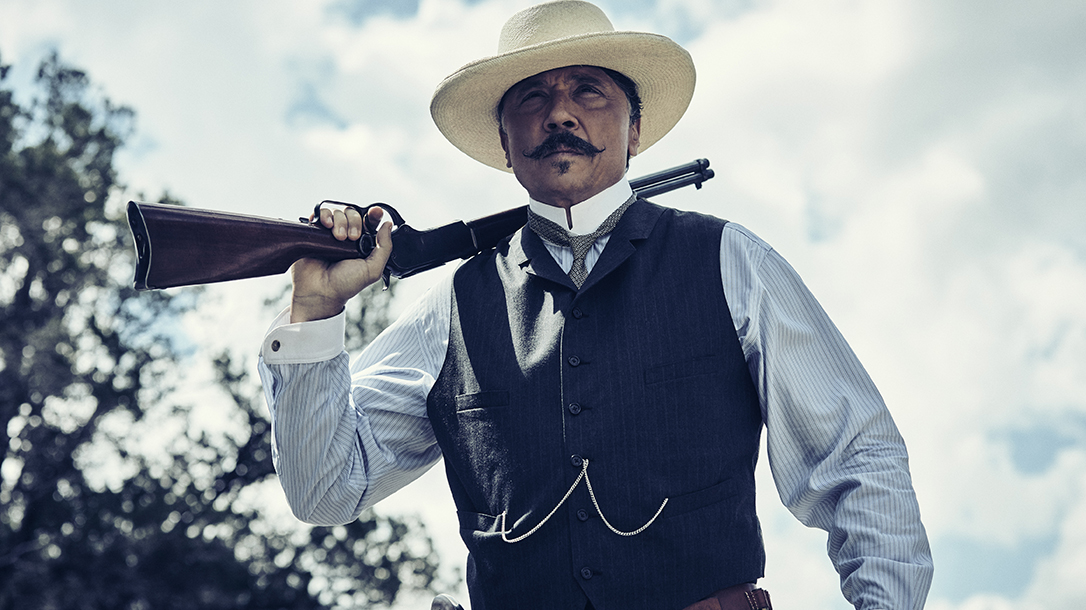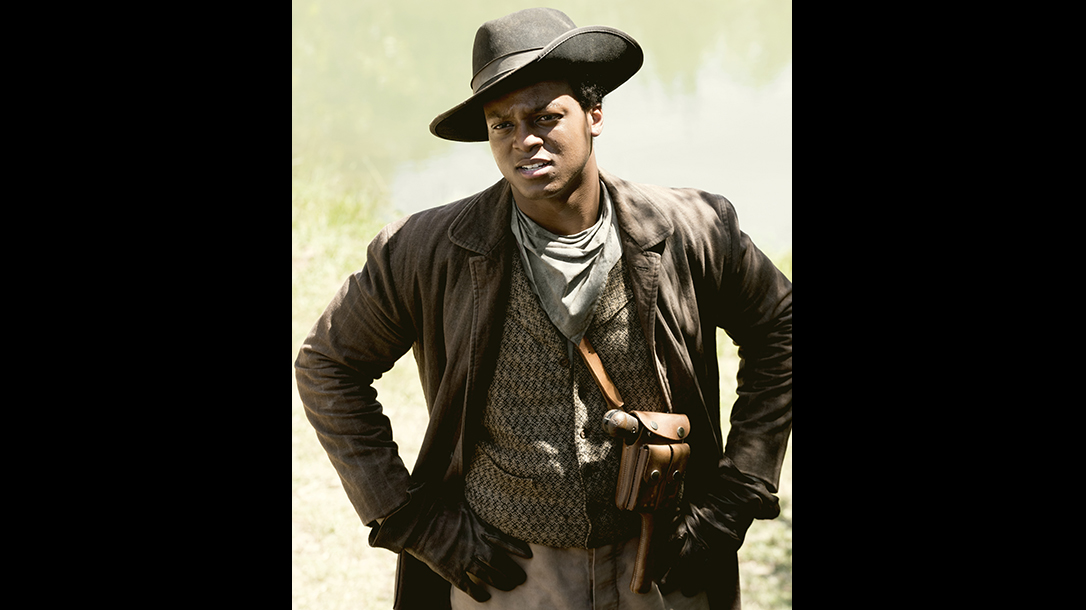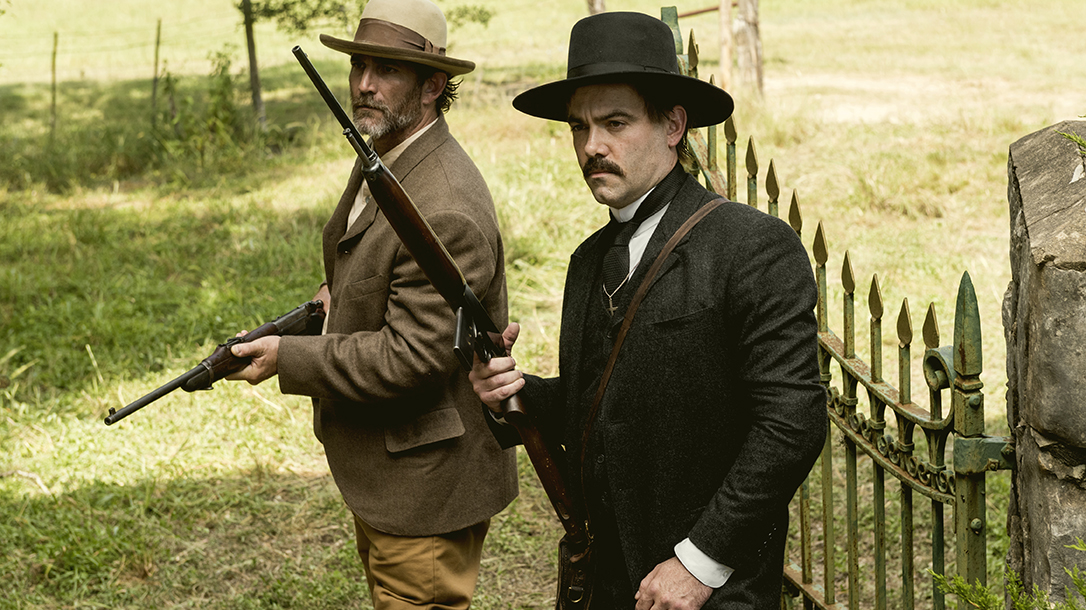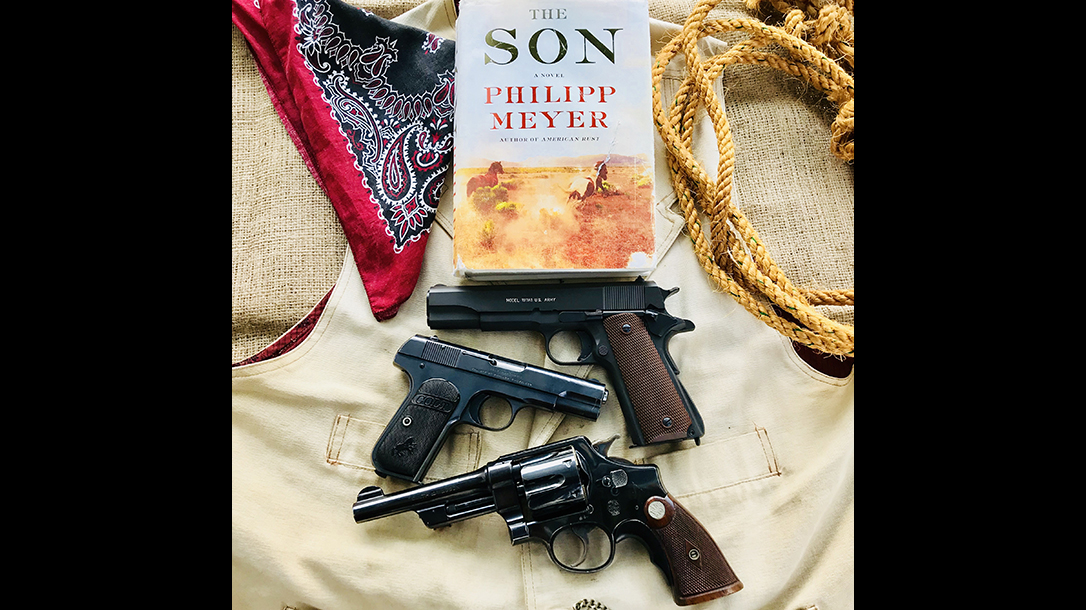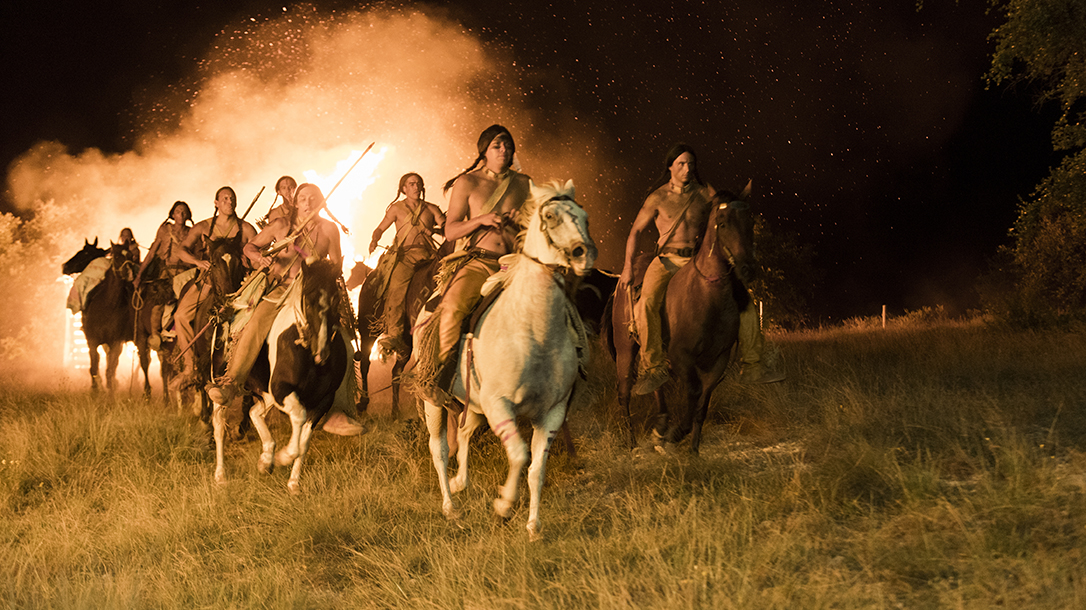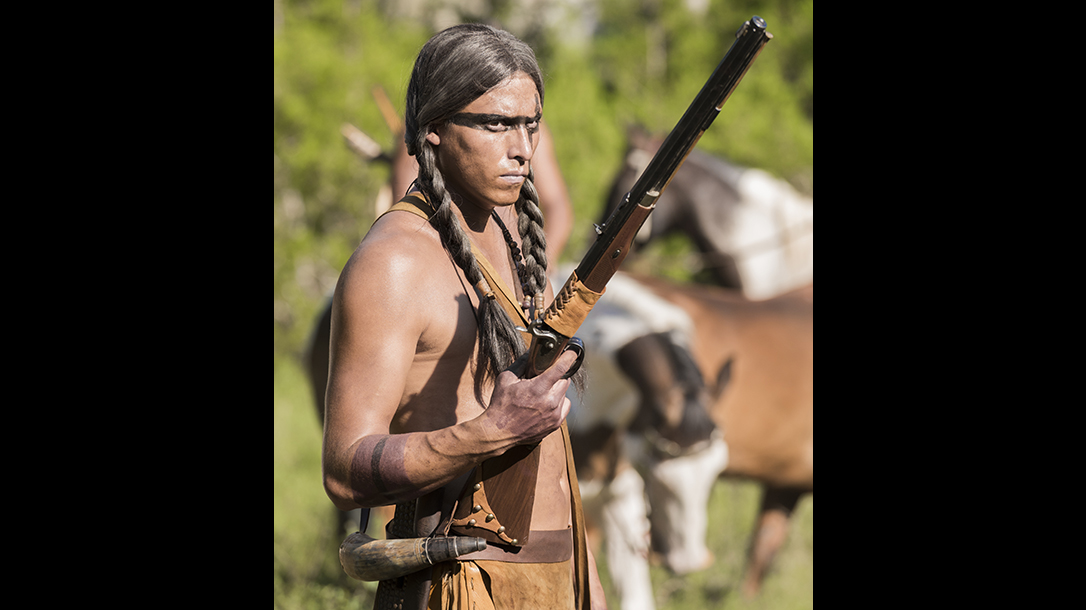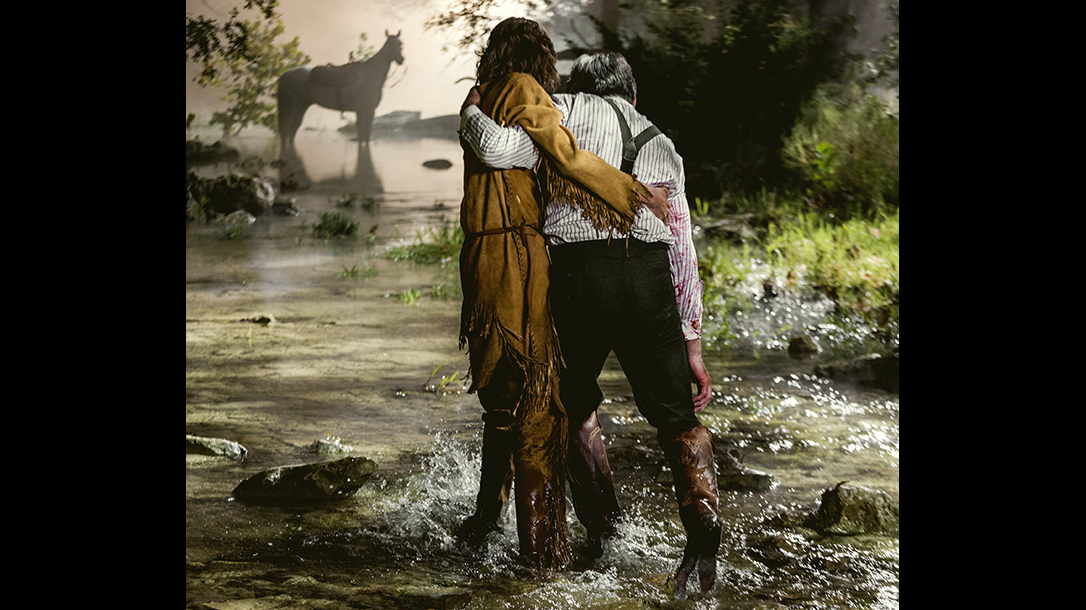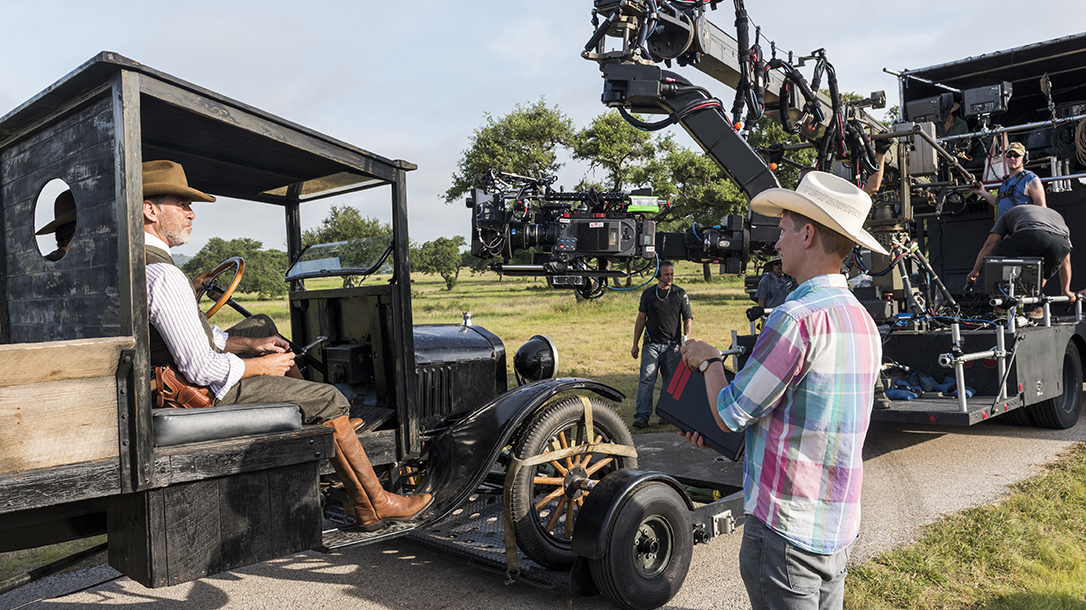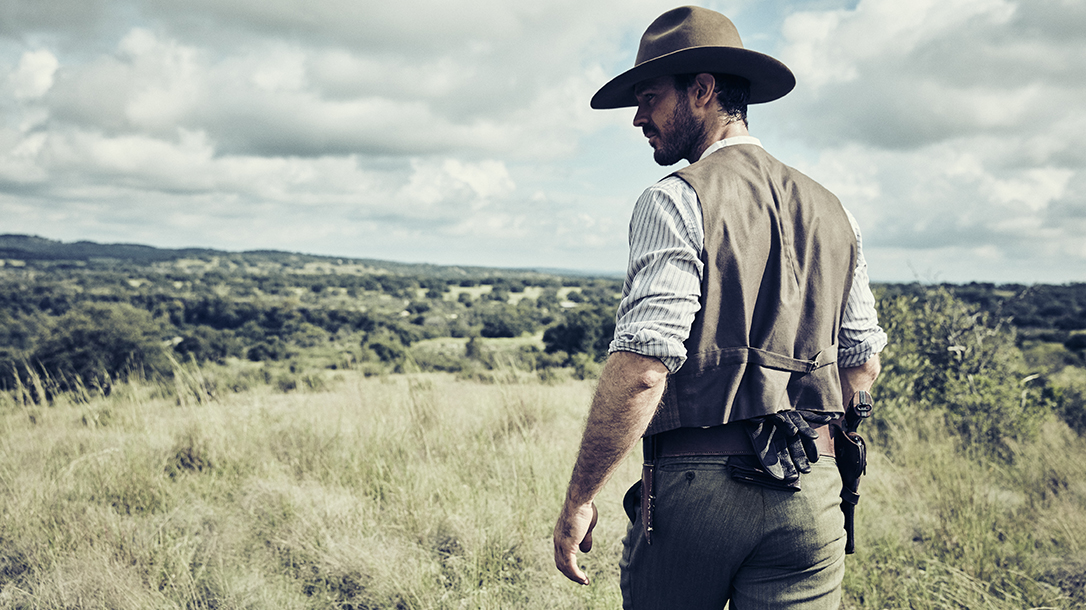“The Son” is a new TV series that debuted recently on AMC, beginning in April 2017. It is based on a historical novel of the same name written by Philipp Meyer and published by HarperCollins in 2013. Both the book and the TV series follow the life of Eli McCullough from his years as a teenager until late in life, when, as a Texas cattle baron, he looks to the booming oil industry to rescue his huge ranch from looming bankruptcy. The book and the TV plot follow the same basic characters but diverge in the general storyline. This story is told primarily through the eyes of several McCullough clan members, most notably Eli as a teenage captive among the Comanche Indians in the 1840s and the older Eli in South Texas during the border struggles with Mexican seditionists in 1915.
Both the book and the TV series take you through numerous flashbacks and flash-forwards to tell the tale of this Texas family’s “empire.” As you can imagine from the time period, it’s a violent story of pioneer life during the settlement of Texas and all the way to the border wars between Texans and Mexicans during the Mexican Revolution, when bandits crossed the Rio Grande to raid ranches, steal cattle and kill “gringos.”
Advertisement — Continue Reading Below
Eli’s Arsenal
One area where the book and TV series come together is on guns. Young Eli (portrayed by Jacob Lofland) uses a percussion Hawken-type rifle to take game around the homestead and as protection from hostile Comanches. Later, he gets his hands on a cap-and-ball Colt revolver.
As the story progresses to 1915, cattleman Eli (played by Pierce Brosnan) is armed with the latest weaponry. On his hip is a Colt Model 1911 pistol. The Colt hadn’t been around long at this point, so most likely Eli’s influence and standing allowed him to obtain a pistol most folks could only dream about. The 1911 had just recently become the new service handgun for most of the military. It was state of the art at the time. This locked-breech, recoil-operated semi-auto originally held 7+1 rounds of big 230-grain .45 ACP bullets that traveled at 850 fps. In the TV series, Brosnan carries it in a tooled leather holster and belt combination with a double magazine pouch. Clearly, this is a man who is knowledgeable concerning true fighting pistols.
Eli’s long gun is the Winchester Model 1907, the AR-15 of its day. With its semi-auto, blowback-operated action, it fired a proprietary .351 Winchester Self-Loading (WSL) cartridge that carried a 180-grain bullet loaded for a velocity around 1,870 fps. This made it not only a good medium-sized game cartridge, but it was very effective on two-legged adversaries to boot. It came with a five-round magazine. 10-round magazines were also available along with 15- and, reportedly, 20-round magazines. Some of these rifles were converted to full-auto and served in World War I. It was also a favorite of lawmen and outlaws. Its most unusual feature was the operating rod that protruded beneath the barrel and was used to push the bolt back to chamber a cartridge.
Advertisement — Continue Reading Below
Pete
Eli’s youngest son, Pete, who mostly looks after the cattle ranch, is also pretty savvy with his weapons, too. In the TV series, Pete (played by Henry Garrett) uses a large-frame Smith & Wesson revolver. That being said, the only S&W sixgun that would fit into the 1915 timeframe would be the .44 Hand Ejector 1st Model or New Century. This pistol was mostly known as the “Triple Lock” due to the locking points under the barrel, at the rear of the cylinder and on the ejector rod shroud where it locks into the cylinder crane. This model was produced from 1908 to 1915 and was the first of what would become the N-Frame series. It chambered the .44 Special, a cartridge introduced in 1907 to hurl a 246-grain bullet at some 770 fps. The gun on the show looks to be maybe a 5- or 6½-inch-barreled version with service-style wooden grips.
Not quite as up to date on long guns as his father, Pete is shown using a Winchester Model 1894 30-30 lever-action carbine on the TV show.
Phineas
Eli McCullough had two other sons. The oldest, Everett, went his own way and doesn’t play a significant role in the story. The next oldest is Phineas, who flees the Texas frontier for a time to get an education and become a lawyer in Austin. A bit of a dandy, Phineas makes visits to the McCullough ranch when necessary and handles all the business affairs. But don’t let his appearance fool you; he is just as deadly as his dad and won’t hesitate to shoot to protect the family interests.
Advertisement — Continue Reading Below
Beneath the coat of his three-piece suit is a shoulder holster containing what I believe to be a Colt Model 1903 Pocket Hammerless pistol. This is a mid-sized, blowback-operated semi-auto built around the .32 ACP cartridge, which propelled a 73-grain bullet to about 984 fps. With an eight-round magazine, it had decent firepower for that era and was one of Colt’s best-selling pistols for defensive use. It was later issued to U.S. military general officers. Despite the name, this pistol had a hammer that was concealed within the frame and slide. It also had both a thumb safety as well as a grip safety like the larger Model 1911.
The Garcias
This brings us to another significant firearm of the era. In the show, the McCulloughs and their allies visit their ranch neighbors, the Garcias, to exact revenge on them for allegedly stealing cattle, blowing up an oil-drilling rig and being suspected supporters of the Mexican seditionists. The real reason has more to do with the “black gold” that Eli’s daughter, Jeanne Anne, accidently found on their ancient Spanish land-grant property.
Some of the Spanish-American War veterans from the nearby town armed themselves with what were likely military-surplus Krag-Jørgensen carbines. This bolt-action rifle of Norwegian design was adopted as the Springfield Model 1892 and served as the U.S. Army service rifle and a little later with the Navy and Marines until 1907. A shorter carbine version was adopted for cavalry use. It had an interesting box-type, five-round magazine affixed to the right side of the receiver that was loaded through a lid on top. Ammunition had to be loaded one round at a time into the magazine, making the rifle rather slow to load compared to the contemporary Mauser bolt-gun. It fired a cartridge we’ve come to call the .30-40 Krag, which propelled a 220-grain bullet to 2,000 fps.
Advertisement — Continue Reading Below
Going Full-Auto
Eli McCullough also put in a special order for a Lewis machine gun—legal for civilian ownership at the time—for ranch security. This weapon was also used in the TV series for the assault on the Garcia ranch house, a fortress-like structure. The Lewis gun, although used extensively by the British in WWI, was actually an American design perfected by General Isaac Newton Lewis. It was gas-operated with an unusual shroud around the barrel to keep it cool and a round pan-type magazine that held 47 cartridges. At 28 pounds, it was considered a light machine gun and didn’t require a crew like the huge Maxim or Vickers guns.
The U.S. Ordnance Department denied Lewis and his gun, so he retired and set up production for his machine gun first in Belgium before moving to England, where guns started rolling off the assembly line at the Birmingham Small Arms (BSA) factory in 1914. Savage Arms was also contracted during the war to manufacture Lewis guns, and this may have been the source of Eli’s machine gun. Of course, in 1915, the U.S. had not entered the Great War, so the Lewis would have been in .303 British caliber, which launched 175-grain bullets at 2,440 fps. The Lewis also had a firing rate of 500 to 600 rounds per minute and an effective range of 880 yards. It was certainly devastating to the family and the vaqueros on the Garcia spread.
Advertisement — Continue Reading Below
Unusual Suspects
Throughout the TV series, especially in episode 10, other characters are seen with different firearms from the era that you might not expect in your typical Western. One of Eli’s bunch carries and shoots a Mauser C96, an unusual semi-automatic pistol that became known as the “Broomhandle” because of its grip shape.
The Winchester Model 1895 also makes an appearance in civilian and military guises. This box-magazine-fed lever gun could fire pointed (spitzer) cartridges. Those in “The Son” were most likely chambered for the .30-40 Krag or .30-06 Springfield.
Another period Winchester was the Model 1897 pump-action shotgun, mostly like in 12 gauge. This scattergun came in “riot gun” form with a short barrel or longer barrels for sporting use. It was a fast shotgun with an exposed hammer that would shoot as quickly as you could pump it and hold down the trigger.
Advertisement — Continue Reading Below
Phineas also has a state-of-the art long gun. In episode eight, he’s seen briefly with a Remington Model 8. Another semi-auto rifle and Browning invention, it had a detachable five-, 10- or 15-round magazine. In .30 and .35 Remington, it was a favorite of peace officers like Texas Ranger Frank Hamer.
The Son’s Common Models
Of course, as you’d expect, there are some more common firearms on the show. You’ll spot holsters carrying the ubiquitous Colt Model 1873 Single Action Army (SAA), and the Garcias seem to prefer lever-action Winchester Model 1873 rifles. Double-barreled shotguns—probably the most unsung heroes of the West—make several appearances.
In the next season of “The Son,” we’ll find out in what happens to Eli, Pete, Phineas and the rest of the family. The screenplay will undoubtedly differ from the source book, but if you want to see what happens right away, copies of the novel are readily available.
Advertisement — Continue Reading Below
For more information on “The Son,” please visit AMC.com.
This article was originally published in the spring 2018 issue of “Guns of the Old West.” To order a copy and subscribe, visit outdoorgroupstore.com.
